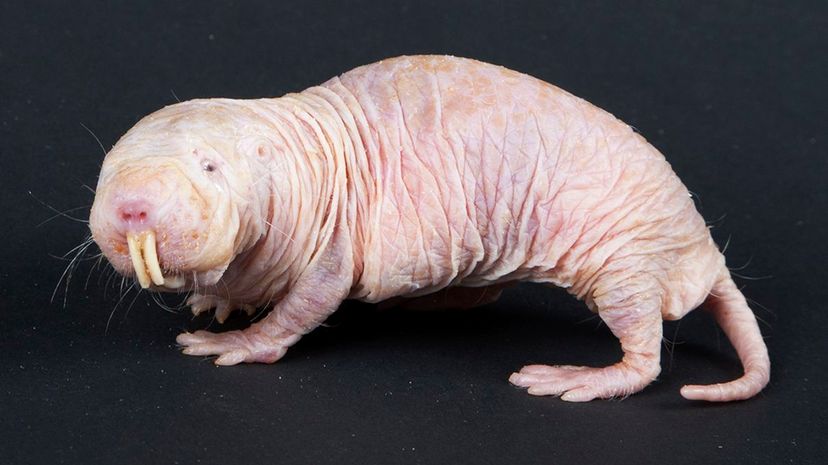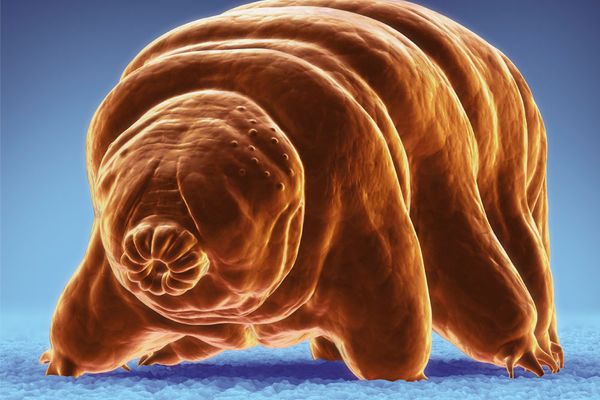
Learning interesting facts about animals is like reading evolution's celebrity gossip rag. There's a delightfully voyeuristic thrill that comes with learning that a star-nosed mole can smell underwater by blowing bubbles and then sucking them back through its nose, or that a sea otter has so much hair, it has the approximate surface area of a hockey rink. But just like not all celebrities are equally fascinating, not all animal facts are created equal. It's nice to know that the massive horns of a ram can weigh more than all its other bones combined, but ram horns are small potatoes next to the legendary antics of true animal-fact royalty. Almost all cephalopods are in this category, as is the platypus and the infamous honey badger. But have you heard about the naked mole rat?
You're gonna want to sit down.
Advertisement
The naked mole rat (Heterocephalus glaber) looks about like you'd expect — a hairless mole crossed with a hairless rat crossed with the chest-bursting creature from "Alien." But this subterranean African mammal is by far the longest-living rodent, it's cold-blooded and immune to cancer, practically impervious to most types of pain, and shows very few signs of aging during its life. Like some insects, they are eusocial, meaning a group of them has a queen that takes on all the reproductive responsibilities for the group, while other females are sterile and have jobs like finding food and fending off predators. They also can survive for long periods without oxygen by basically turning into plants.
Wait, what?
A new study published in the journal Science reports that these weirdos can switch from using glucose to power their bodies, to fructose like a plant does. Under normal, oxygen-rich conditions, the naked mole rat runs its cells on glucose like every other self-respecting mammal on the planet. Oxygen is necessary to fuel this process. But in the absence of oxygen, it turns out naked mole rats can switch over to a different biochemical process using fructose, the sugar that powers plants.
Scientists have known for a while that, because they live in large groups in tight, underground spaces where plentiful oxygen supplies aren't a given like they are aboveground, naked mole rats have evolved to withstand shockingly low-oxygen situations. Until now, however, nobody has quantified the extent to which these hideous little wizards can abstain from breathing air. This team of international researchers discovered the little animals can chill for five or more hours at a time in extremely low-oxygen environments, and for up to 18 minutes with no oxygen at all.
To figure this out, the researchers put both naked mole rats and mice in a chamber with no oxygen. As expected, the mice died immediately, but although the naked mole rats quickly lost consciousness and their heartbeats slowed from 200 to 50 beats per minute, after being introduced back into the air 18 minutes later, they fully recovered and went about their business. This University of Illinois video explains the transformation:
But exactly how do the animals manage this?
"The naked mole-rat has simply rearranged some basic building-blocks of metabolism to make it super-tolerant to low oxygen conditions," said lead author Thomas Park, a professor of biological sciences at the University of Illinois at Chicago, in a press release.
Other mammals can metabolize fructose in the absence of oxygen, but only in limited parts of the body, like the gut. Naked mole rats have emergency fructose services set up in all their organs — even their brain and heart — making them unique among mammals in that regard, at least as far as we currently know.
Advertisement
